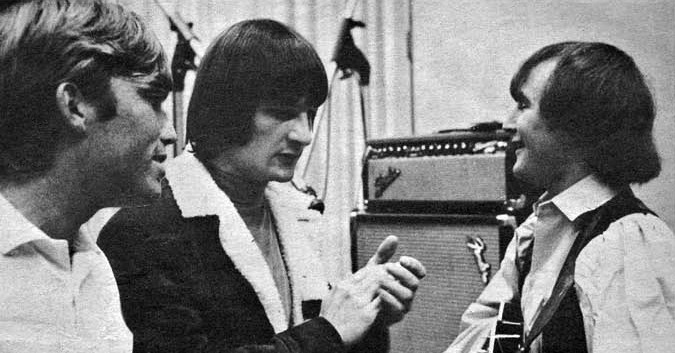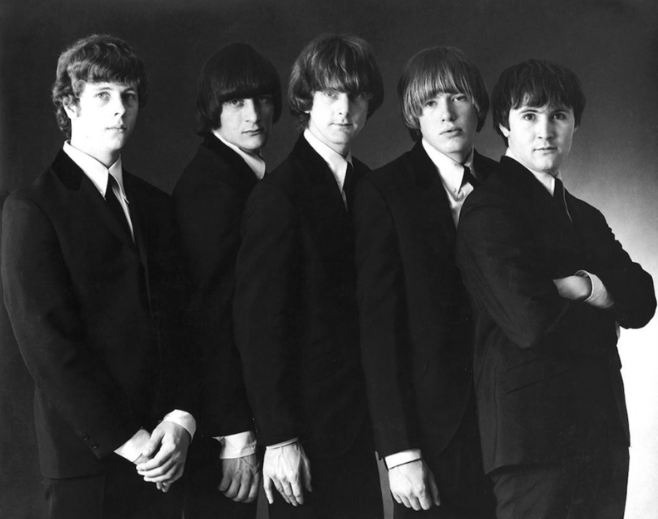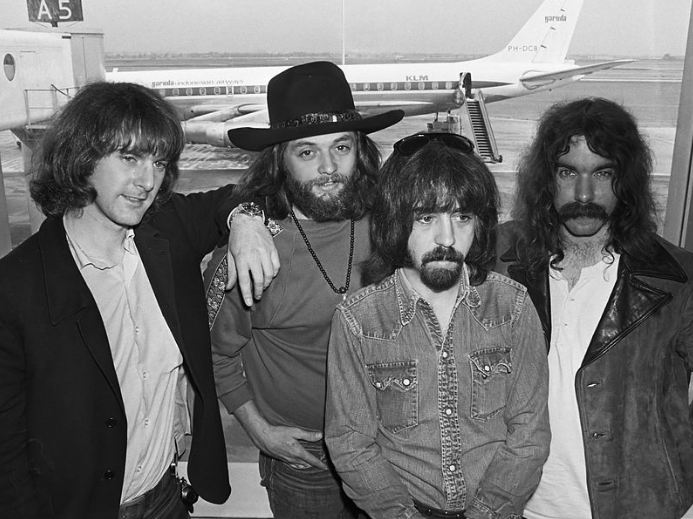The 1960s was an outstanding decade. It brought about drastic changes to almost every field of life. It was when baby “boomers” were being born while the youth was trying out new things. Fashion, entertainment, music, you name it, and the 60s had it.
Music in the 1960s was booming. Bands like The Beatles, The Beach Boys, and many others gave phenomenal music to the world, which inspired many future musicians. People were crazy about their favorite celebrities. They would copy their style, fashion, and the trends never died for them.
The Beatles were the first rock band of their kind. Their popularity knew no stopping. It won’t be wrong to say that they may have been the reason for introducing rock music to the Americans. While the British enjoyed their peak in the entertainment industry, a trio of young American men made history for America.
The Byrds were an American boy band that initially started as a rock band, but as they grew, they presented the world with a new kind of music – folk-rock. Although the band went through many ups and downs, they achieved a lot in their short career. The period of their success may have been short, but the impact was nothing but significant. Some even called them the “America’s answer to The Beatles.”
How They Started
It all started with three men – Jim McGuinn, Gene Clark, and David Crosby. The men had ample experience performing at coffee bars in Los Angeles. They were also familiar with working with bands as they were part of smaller bands in the past. Another thing similar between the three of them was their love and respect for the Beatles.
All three of them acknowledged the style of music adapted by the Beatles. They covered the Beatles’ songs while incorporating their own acoustic style. The unique quality of this trio was their harmonizing voices. The band covered many songs in a local nightclub in California. They soon started calling themselves “Jet Set,” a name inspired by Jim’s love for space technology.
Early Days
In 1964, the trio was introduced to Jim Dickson, who made their way into World Pacific Studios. Dickson quickly recognized the talent the three men had and arranged a team working for them. The trio started to make music that revolved around Bob Dylan’s hit songs. Their inspiration came from Bob’s folk music while taking bits of pop from the Beatles. Soon, they added the drummer Michael Clark to their band.
Although the band was emerging, they were still low on budget. They did not have enough equipment and instruments and made do with makeshift ones. Jim Dickson, their manager, succeeded in getting a single deal with Elektra Records. By then, the Americans were under the spell of the British Invasion. Keeping this in mind, the Jet Set changed its name to Beefeaters to relate with the British.
The band’s first-ever single, “Please Let Me Love You,” was released under Elektra Records in October 1964, but it failed to make a significant impression on the music charts.
Way to Success
The band started working on their new project, suggested by Dickson. Dickson got hold of a disc by Bob Dylan that had his song “Mr. Tambourine Man.” Once again, the band was to add their unique style to the already hit song. Initially, the members were hesitant to accept this offer. They did not think it was a good idea. They did, however, added rockier notes to the song and sang the verses in their own way.
Everything changed for the boys when Dickson invited Bob Dylan to the World Pacific Studios and asked him to give feedback. He loved the rendition and said, “Wow, man! You can dance to that“. Even though the song was different from the original one, Bob Dylan’s acknowledgment gave hope to the young boys, and they worked harder on finishing it.
Seeing the enormous success that the Beatles were getting, the band decided to get new equipment for themselves. They also hired a new man, Chris Hillman, as their bassist. Soon, they signed deals with Columbia records. They also changed their name for the final time as the Byrds – incorrect spelling of ‘birds’ just like ‘beetles.’ They recorded their debut song “Mr. Tambourine Man” in the studios and waited for it to be released.
While waiting, they kept visiting the famous Ciro’s Le Disc nightclub. Their frequent stay in the club made them familiar among the youth, and their performances were looked forward to by many stars in the area. Soon, the Byrds were a famous name in that region.
In April 1965, the world was given a gift in the form of “Mr. Tambourine Man.” People were instantly hooked to it, and the song was an immediate success. The harmony with which McGuinn, Clarke, and Crosby sang took the world by surprise. They were shocked to hear such deep folk lyrics used in rock music. The press coined the term “folk-rock” and associated its creation with the Byrds.
It took the song only three months to top the US Billboard and UK singles charts. The album, which had songs mostly written by Clarke, was getting much attention from the critics. Their song “I’ll Feel a Whole Lot Better” is considered one of Byrd’s best songs.
With the success of “Mr. Tambourine Man,” Columbia Records wanted the Byrds to release another song by Bob Dylan. The band was reluctant as they did not want the world to know them just by their covers. They chose the song “All I Really Want to Do” by Bob Dylan. The band agreed, but interestingly, the same song was covered by Cher. Columbia Records released the song in a rush, but the Byrds version never went beyond number 40 on the charts while Cher reached number 15.
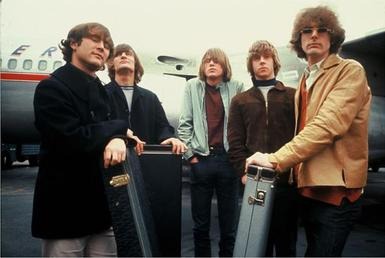
By http://www.drb-fans.com/pre-drb.html, Copyright : Sony Music Entertainment, 1965 (then CBS, Inc.), Fair use, https://en.wikipedia.org/w/index.php?curid=22312881
Downfall and Dismemberment
By late 1965, the Byrds have made a respected name in the music industry. They were backed by famous people around the world and performed in many cities. They released their second album, “Turn! Turn! Turn!” in December 1965, and it was a commercial success.
Although McGuinn was considered the band leader and lead vocalist, all the main members took an equal turn in singing. This confusion regarding the lead vocalist was criticized by many. Another negative aspect about the Byrds was their distant nature from each other. Even while performing on stage, they seemed disconnected from each other. People assume that this was because of the drugs they take in abundance, which causes mood swings.
In March 1966, the band released their original song “Eight Miles High.” The song had psychedelic rock elements incorporated in it. Upon release, the song was banned in the US with allegations that the lyrics promote the use of recreational drugs. The band denied all allegations, and even when the ban was lifted, the song reached number 14 in the US and number 24 in the UK.
In the same year, Gene Clarke left the band. This was a great loss as Clarke was the band’s main songwriter. He always had a fear of flying and always felt isolated from the rest of the band. It is said that McGuinn actually said, “If you can’t fly, you can’t be a bird,” to Clarke, targeting his fear of flying.
The band released their third album, “The Fifth Dimension,” with more psychedelic and rock music. By 1967, the band started to feel uncomfortable with Crosby. He wrote the song “Lady Friend,” which did poorly on the charts. He also had a problem giving speeches on controversial topics between performances. As a result, Crosby was fired from the band.
The End for the Byrds
McGuinn and Hillman tried to form the band again by recruiting other musicians. While everyone was talented in their own space, the band could not reach success like the Beatles. They hired Gram Parsons, who was an expert in country music. The band came up with a mixture of country and rock called “Sweetheart of the Rodeo,” which did decent business on the charts.
Later, Parsons left the band, followed by Hillman, who founded their own band, “The Burrito Brothers.” McGuinn hired new members – Skip Battin, Clarence White, and Gene Parsons, who remained the most stable. The band did well for some time but failed to make an impact. By the end of the 1960s, the Byrds were nearly gone. The original members of the Byrds reunited in 1973 to give a Top 20 performance on the charts.
Although the Byrds’ fame was short-lived, their impact was great on the music world. Even after the dismemberment, the former members did well with their lives and chose solo careers. The band was included in the Rock & Roll Hall of Fame in 1991. The Byrds will always fly high among the overs of music for ages to come.
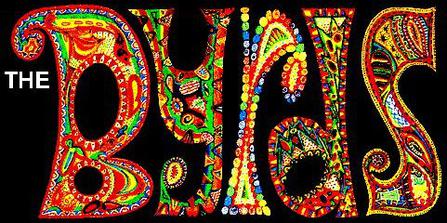
By My own scan of the front album cover., Fair use, https://en.wikipedia.org/w/index.php?curid=30610123
Interesting Facts About the Byrds
- Because the members of the group were considering concepts that were related to flying and freedom, they decided to call their band “Birds.” They changed the spelling of their band’s name to “The Byrds” because at the time, “bird” was slang for “girl” in the United Kingdom.
- The Byrds were among the first bands to experiment with folk rock, a genre that fuses traditional folk music with rock and roll. They covered a lot of Bob Dylan songs, including “Mr. Tambourine Man,” which was their first hit in 1965 and was one of the many songs they covered.
- There were three songs on the Sweetheart album that were intended to feature Parsons singing lead vocals. One of these songs was a cover of “This Christian Life.” Those vocals, however, were ultimately replaced by McGuinn.
- Although it is now regarded as a classic album that served as an important source of inspiration for an entire subsequent generation of musicians, the Sweetheart album did not fare well in terms of its commercial reception when it was first released. The album had the band’s lowest Billboard chart peak at the time, peaking at number 77.
- Soon after the album was released, Parsons parted ways with the band.
- Sweetheart is widely regarded as the first album to combine country music with rock and roll. As a direct result of the album’s success, bands like The Eagles and artists who fall into the alternative country subgenre, such as Uncle Tupelo, Son Volt, Wilco, The Jayhawks, and Ryan Adams, were provided with their first opportunities to perform.
- In 2018, to celebrate the half-century anniversary of the release of their groundbreaking album, McGuinn and Hillman got back together for a tour that was supported by the country music icon Marty Stuart and his band.
- Stuart’s electric guitar is a Fender Telecaster, and it was given to him by guitarist Clarence White, who contributed to the recording of the album Sweetheart. This is how Stuart became connected to the album in the first place.
- Mr. Tambourine Man and Turn! Turn! Turn! are the two songs in particular that remain iconic with the Byrds even to this day.
- The Byrds were a rock and roll phenomenon that, even though they only existed for a little over a decade, not only had glory days but also left a lasting impression on both the genre of rock and roll and popular music in general.


